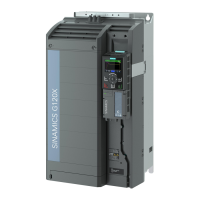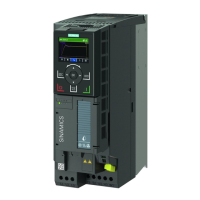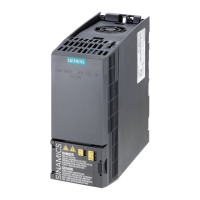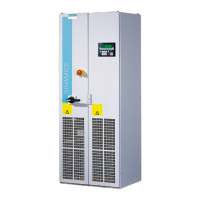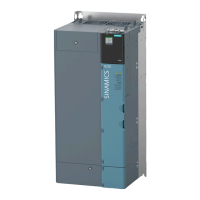Connecting
4.4 Connecting the motor to the converter in a star or delta connection
Power Module PM240P-2
Hardware Installation Manual, 06/2020, A5E37800827C AD
47
4.4 Connecting the motor to the converter in a star or delta connection
Overview
Standard induction motors up to a rated power of approximately 3 kW are usually connected
in star/delta connection (Y/Δ) at 400 V/230 V. For a 400-V line supply, you can connect the
motor to the converter either in a star or in a delta connection.
Function description
Operating the motor in a star connection
In a star connection, the motor can provide its
rated torque M
N
in the range 0 … rated fre-
f
N
.
U
N
= 400 V is available at a
f
N
= 50 Hz.
The motor goes into field weakening above
the rated frequency. In field weakening, the
available motor torque decreases proportion-
ally with 1/f. In field weakening, the available
power remains constant
.
Operating the motor in a delta connection with 87 Hz characteristic
n a delta connection, the motor is oper-
ated with a voltage and frequency above
its rated values. As a consequence, the
motor power is increased by a factor
√3
≈ 1.73.
= 0 … 87 Hz, the motor
can output its rated torque
M
N
.
U = 400 V is
available at a frequency of
f
= √3 × 50 Hz ≈ 87 Hz.
The motor only goes into field weakening above 87 Hz.
The higher motor power when operated with an 87 Hz characteristic has the following
disadvantages:
● The converter must supply approximately 1.73x current. Select a converter based on its
rated current - and not its rated power.
● The motor temperature increases more significantly than when operated with f ≤ 50 Hz.
● The motor must have windings that are approved for a voltage > rated voltage U
N
.
● As the fan impeller rotates faster, the motor has a higher noise level than operation with
f ≤ 50 Hz.

